Avro is one of the great names in aviation history, the company being founded in Manchester in 1910 by Alliott Verdon Roe and his brother Humphrey. They had great success with the Avro 504 wooden biplane, of which over 8,000 were built for service during the First World War and for some years after. 1924 saw the company, now owned by Crossley Motors, move to New Hall Farm, Woodford in Cheshire. In due course, Avro was owned by Armstrong Siddeley, Hawker Siddeley and British Aerospace, the name Avro officially becoming defunct in 1963. However, the name Avro lives on, being particularly associated with two iconic aircraft, the Lancaster bomber of the Second World War and the Vulcan bomber, one of the stalwarts of the nuclear, Cold War era.
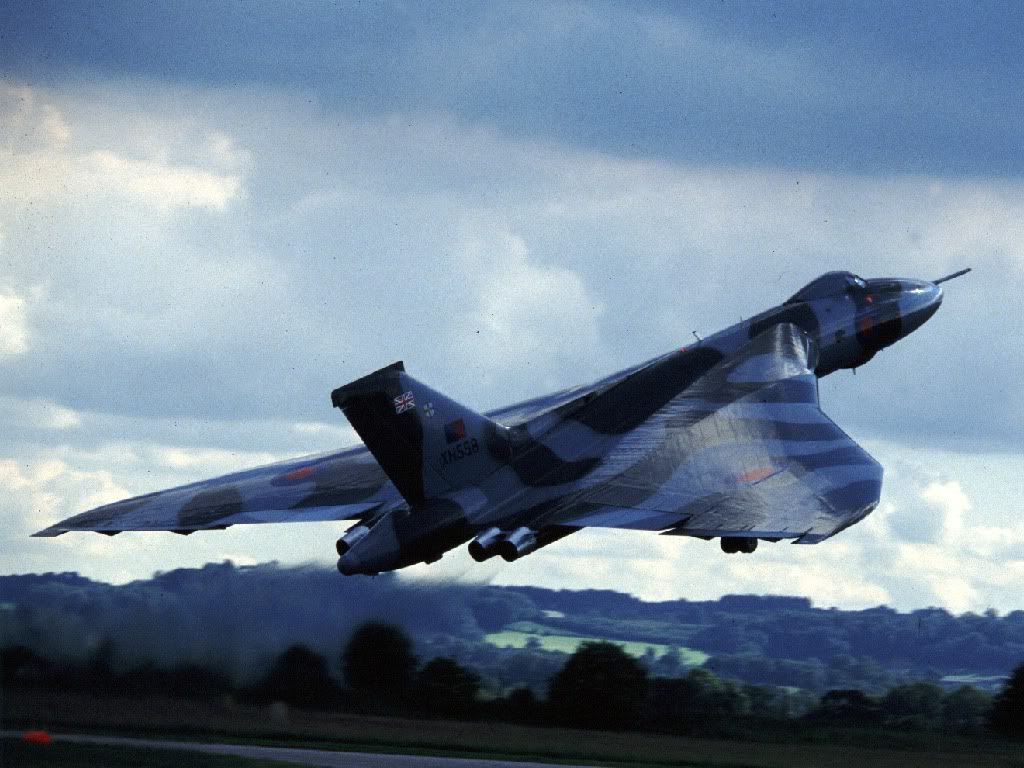
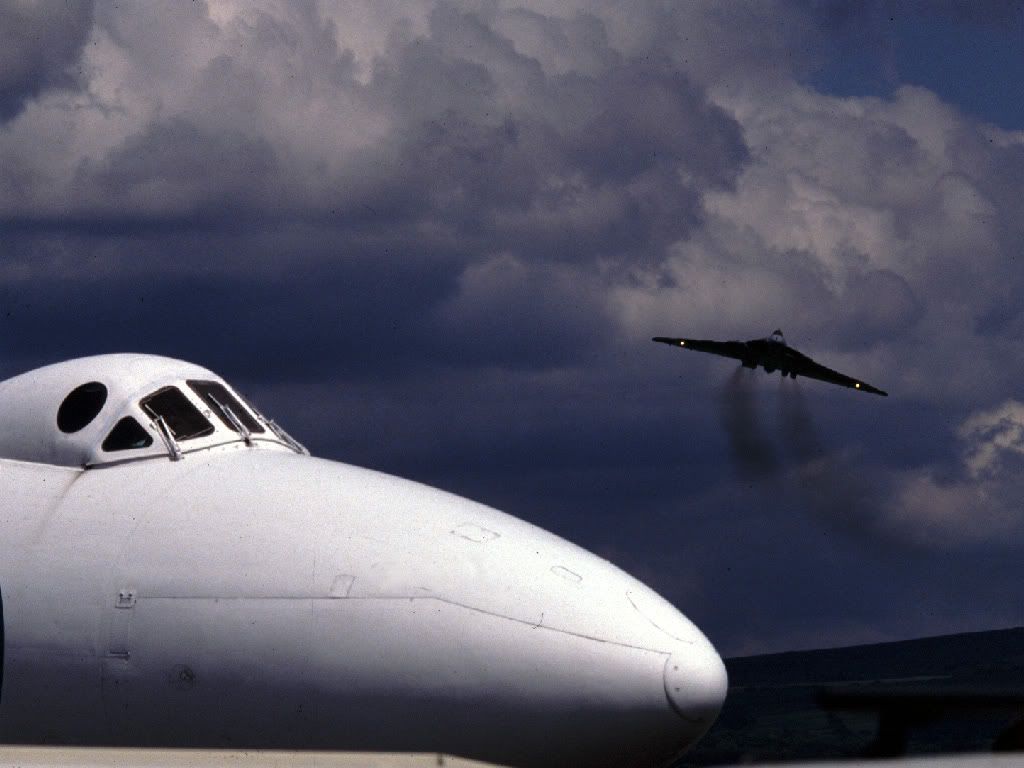
The factory at Woodford is due to close in 2012 but, happily, the golf club’s lease does not expire until 2018.
Until a few years ago there was an annual airshow at Woodford bringing some formidable visitors, not least the Sukhoi fighters, Tornadoes, F-15s and F-16s giving astonishing displays. Of course there was always a visit from the Battle of Britain Flight’s Lancaster, the last remaining (at that time) airworthy Vulcan, and many another choice aeroplane from the past.
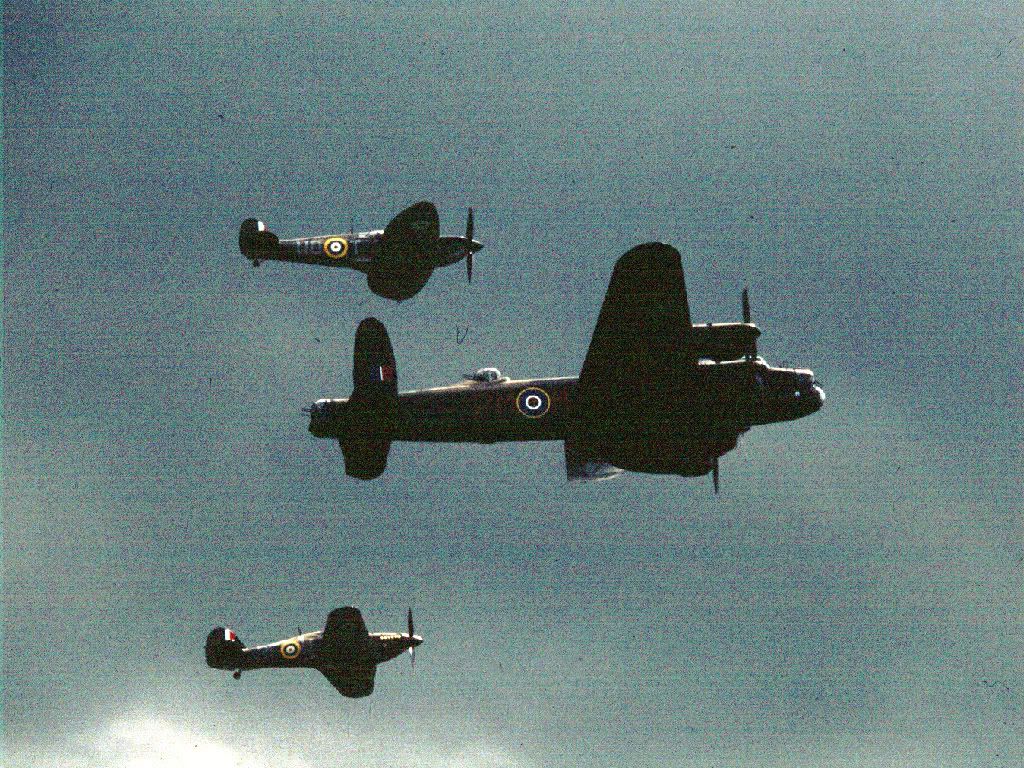
The name Avro flourishes also in a little 9-hole course hidden away from public gaze down a narrow lane beside the Woodford airfield. It began life in the late 1960s when a number of employees were given permission to develop a course just beyond the boundary fence. That course had two holes! Over time it was expanded onto lower ground into the course we know today.
Strictly speaking this a 10-hole course because there are separate greens for the 4th and 13th holes although they start out over a shared fairway. Given also that there are separate teeing grounds for each hole, there is plenty of variation of strategy first and second time round. There are two distinctively different sections to the course, one running along exposed high ground adjoining the perimeter of the airfield, the other on lower ground, below a steep escarpment which is brought into play on three holes. Despite its proximity to the aircraft factory, the course is delightfully rural, overlooking Cheshire farmland in one direction and with views to Kinder Scout and the Pennines in the other. Skylarks, buzzard and curlew are among the birdlife likely to be seen and heard. From time to time you are reminded of the club’s origins by the shelters to be found on a number of tees:
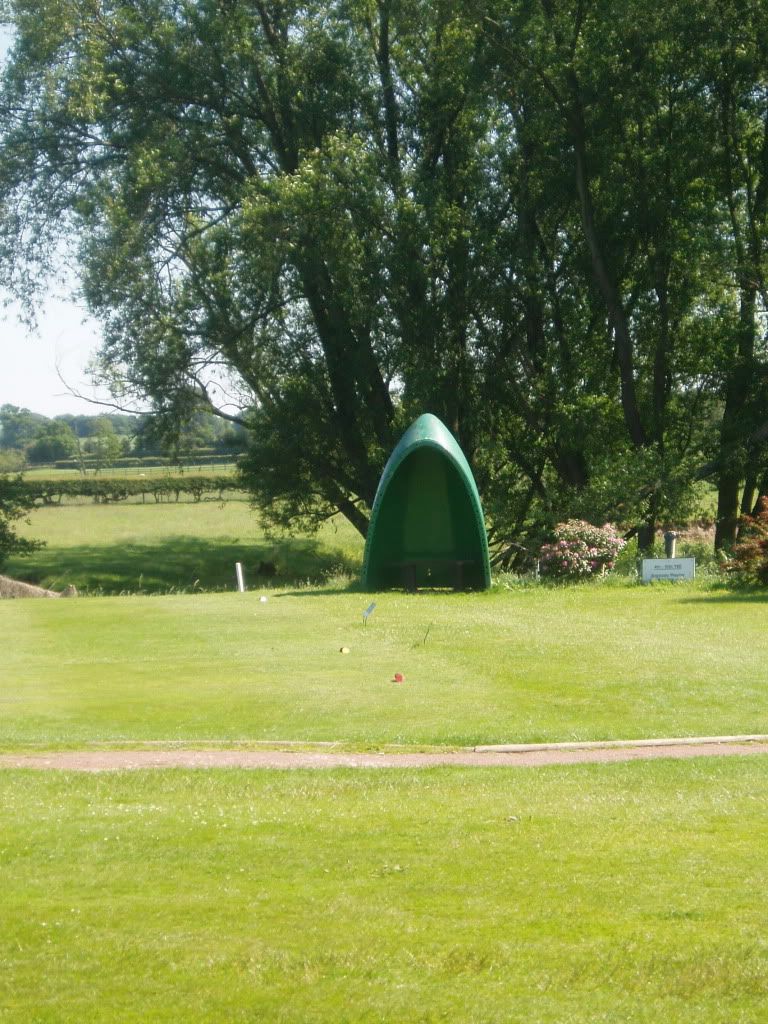
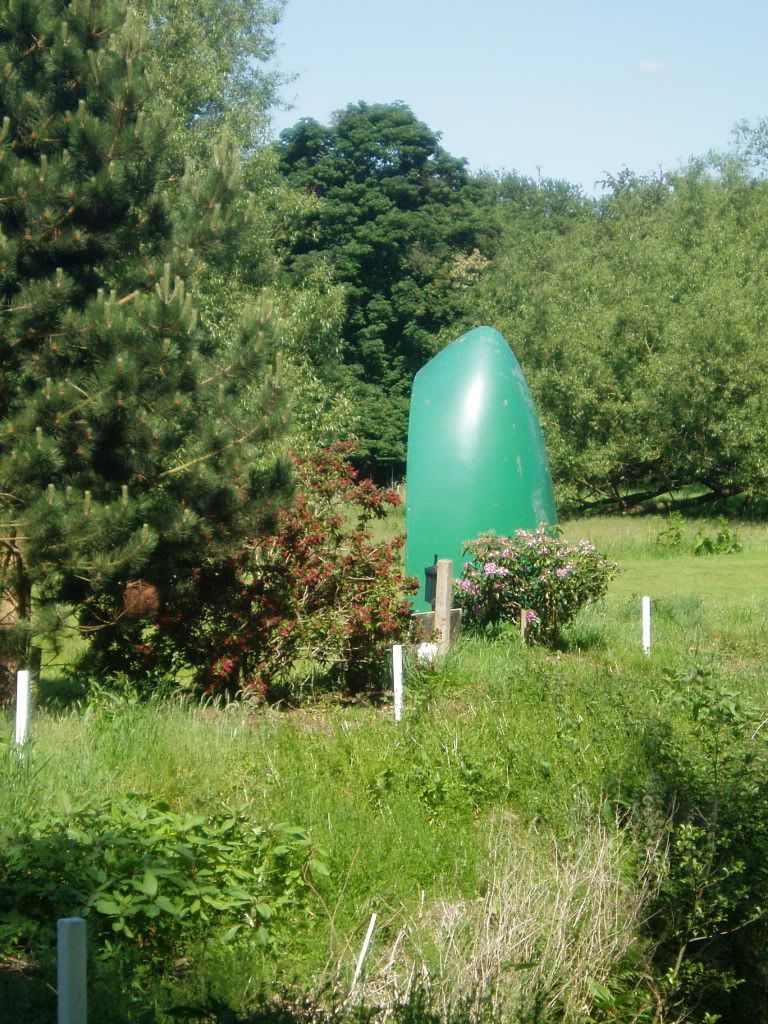
On the whole the greens are small, but they are rarely straightforward targets. Most of the putting surfaces have simply been developed from the original grass, but holes 1, 2, 4 and 7 have been professionally designed.The fairway turf is beautifully crisp and conditioning on such a low-profile course is admirable. Total length is 5630 yards to a par of 69 and a standard scratch of 67. Each hole is named after an Avro aeroplane. Until recently visitors to the course were only allowed as guests of members. Now unaccompanied visitors may play at certain times and a limited number of societies is welcomed.
1. 292 yards par 4/ 10. 278 yards par 4 Andover
The tee shot is to a slightly rising fairway but the flag is visible.
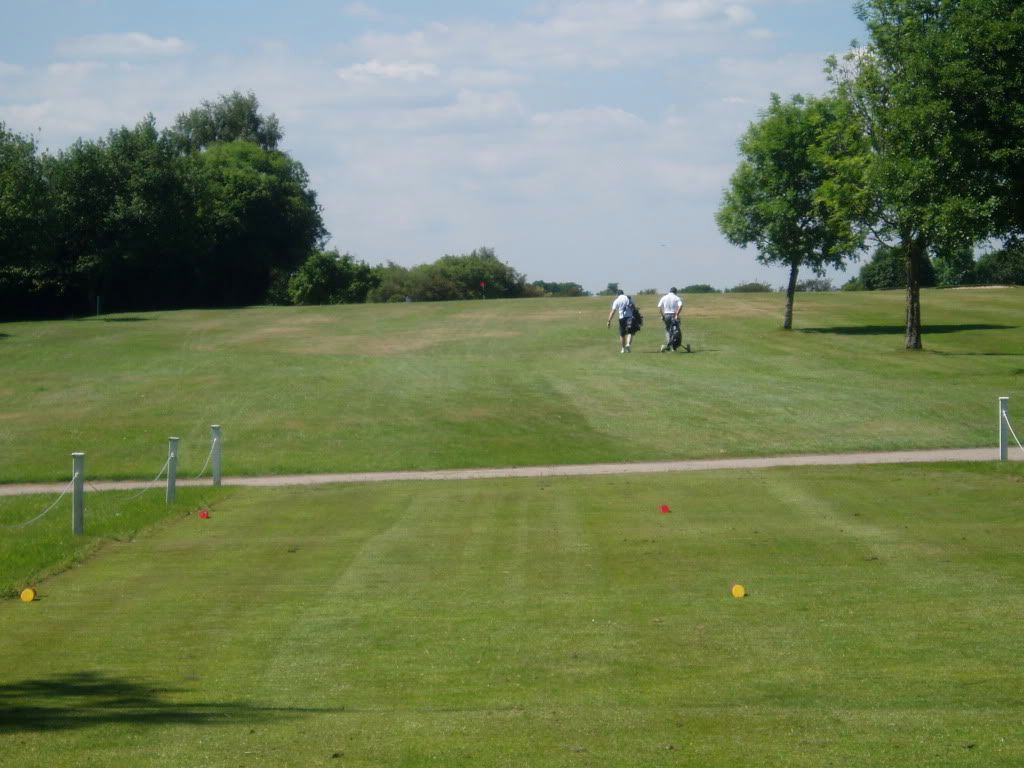
Less discernible are two bunkers to the right of the fairway and one on the left (the direct line) just short of the green. The putting surface is awkwardly raised up, bunkered to the right, and, with a narrow entrance on the direct line, a good test of the short game. Only as you approach the green do you become aware just how close you are to the escarpment on the left and its steep drop into perdition.
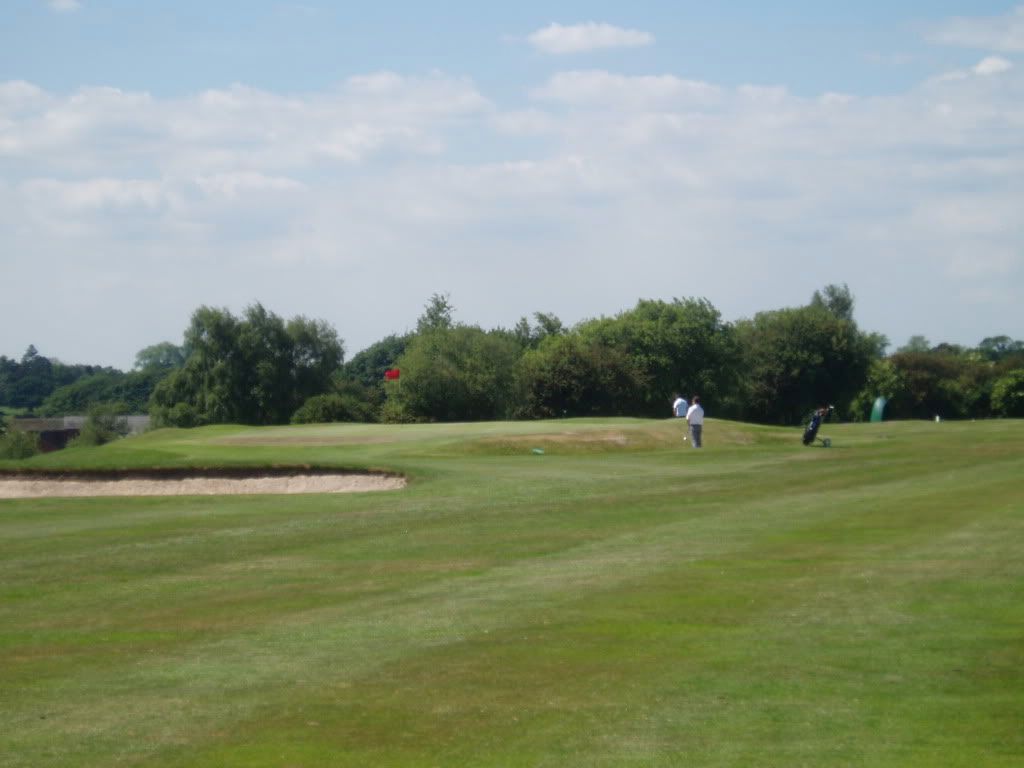
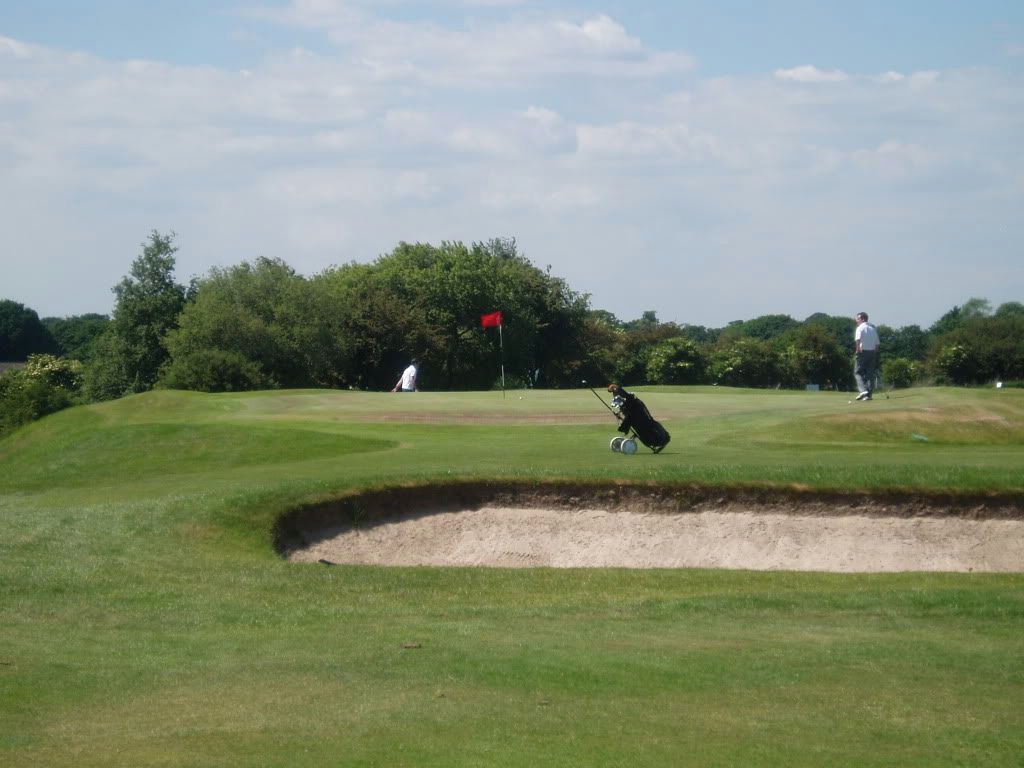
2. 258 yards par 4/ 11. 281 yards par 4 Vulcan
At first sight there is little to indicate the nature of the hole, which is played from elevated tees on the side of the escarpment. The fairway is tree-lined and there are a couple of fairway bunkers on the right, so it is obvious where you are meant to go, but where the green may be located and what may lie between the tee and it is hidden from view.
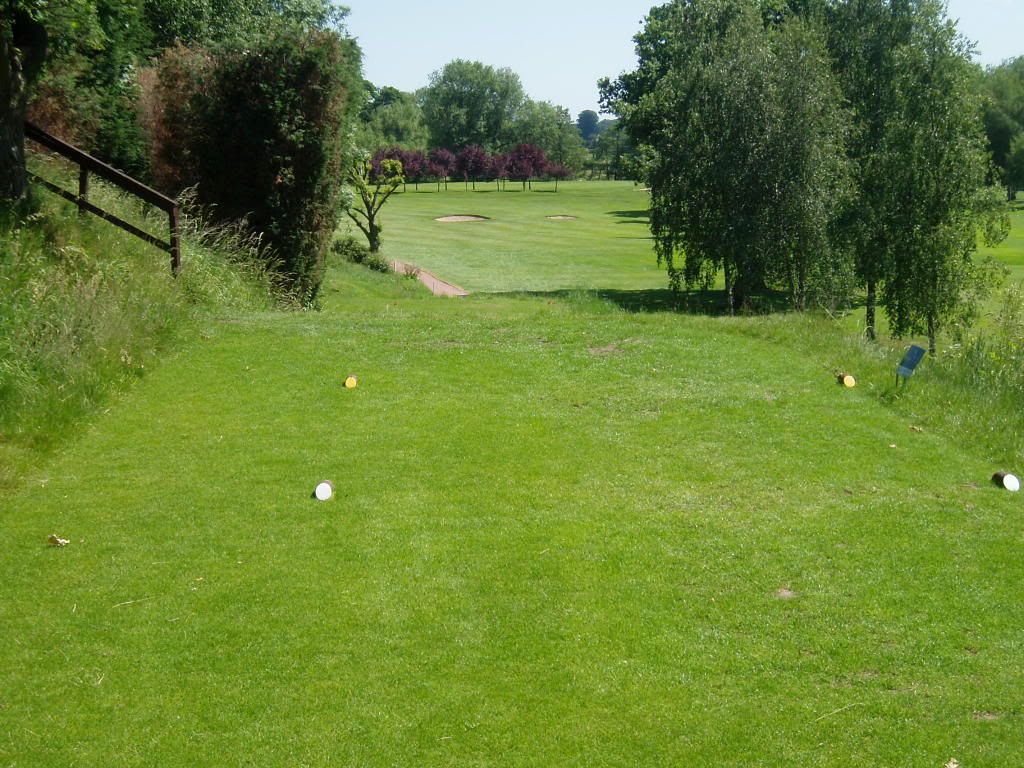
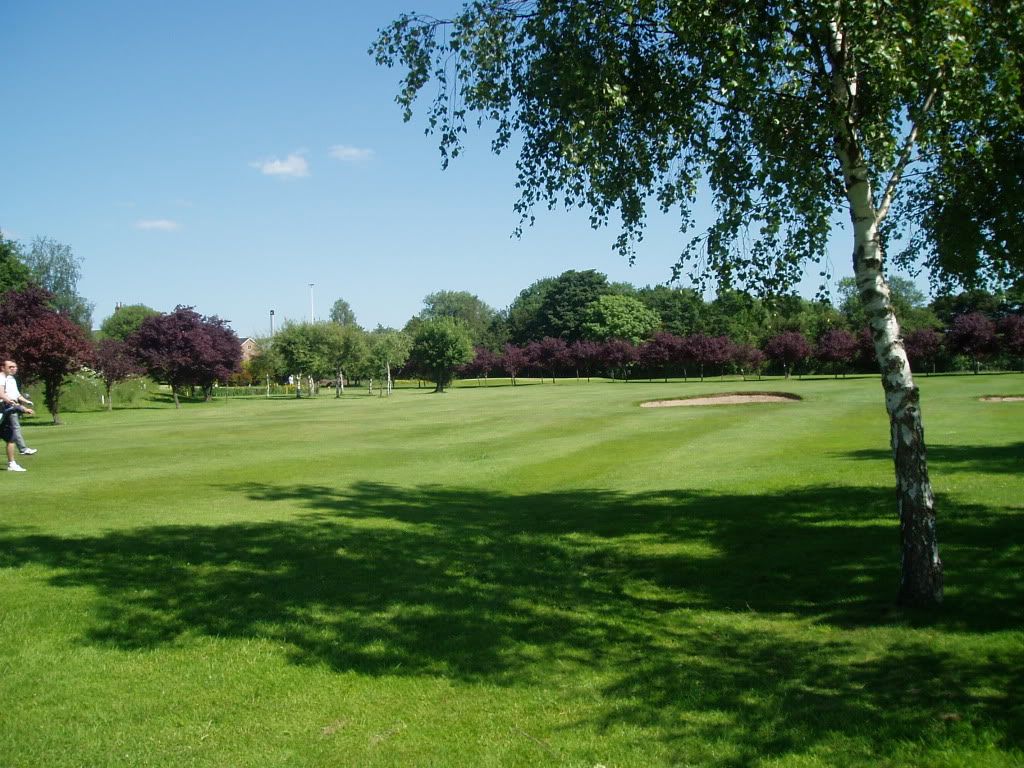
It turns out that this is a sharp and persistent dog-leg to the left, ideally played by placing the tee shot sensibly to avoid tangling with the trees or bunkers, leaving a full-swing pitch over a sleeper-lined pond onto a green sloping significantly from back to front with no room for error to either side or beyond.
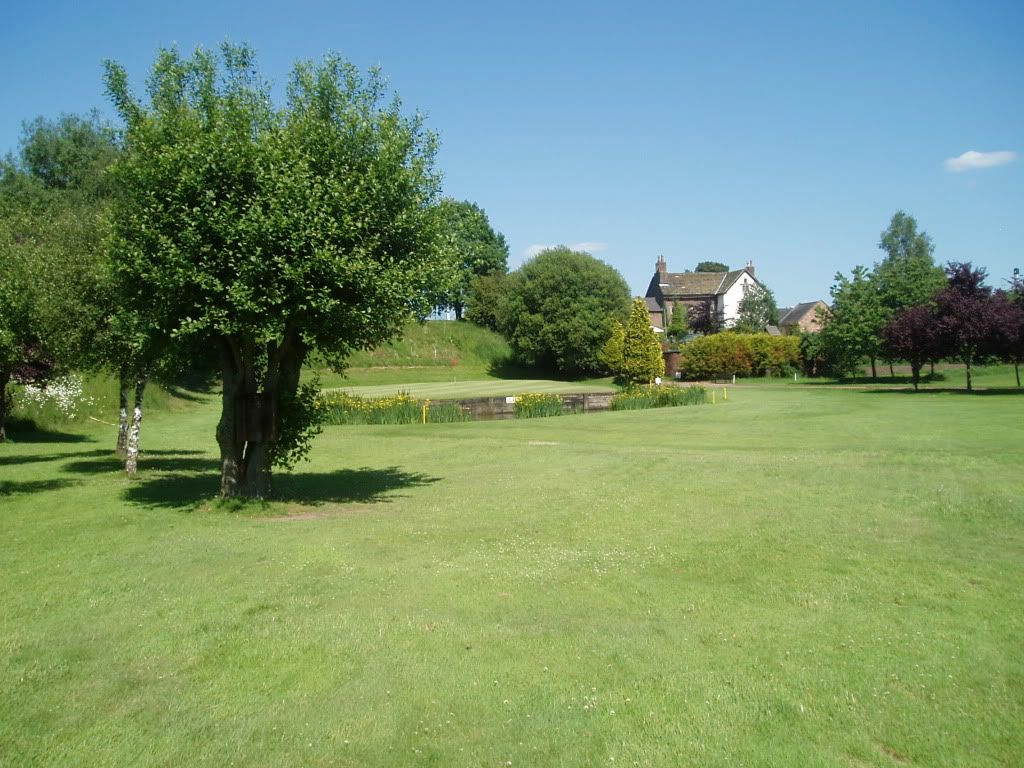
For safety it is forbidden to attempt to drive this green, and all manner of deterrents have been planted on the direct line to back this up.
3. 215 yards par 3/ 12. 255 yards par 3 Manchester
From the elevated tees this seems a very straightforward par 3 over level ground. It is not!
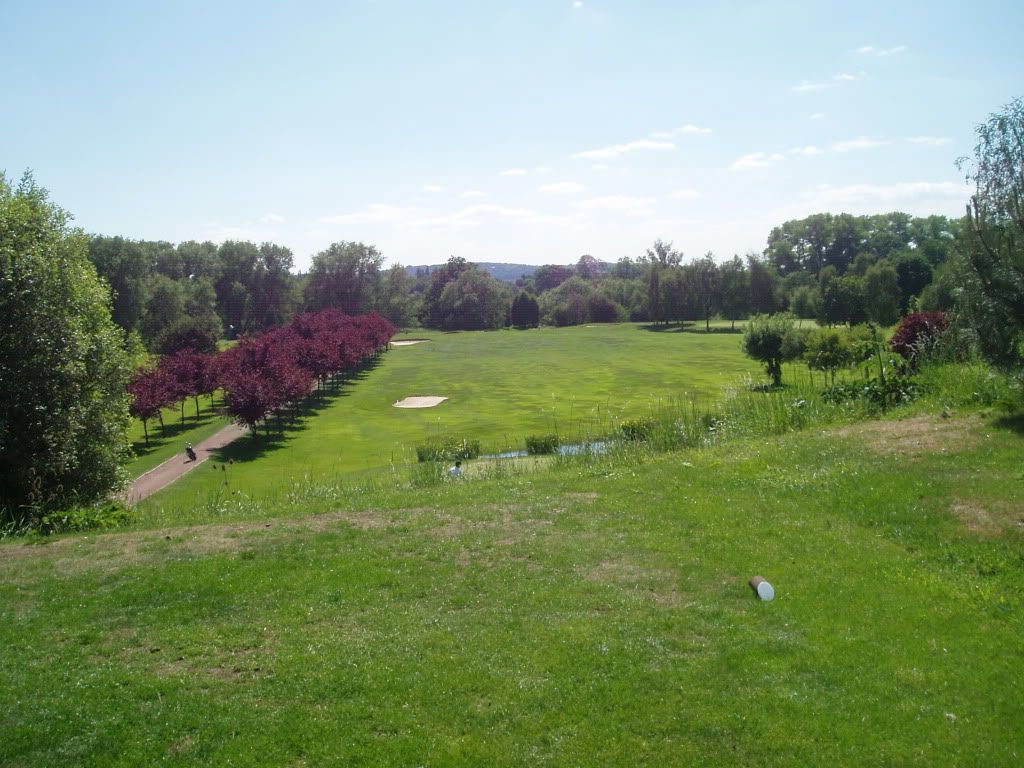
For a start, the green is secreted away in a hollow beyond a ridge, housing serious bunkers. Its putting surface has interesting contours. Few will have the power to reach this green (often played into the wind) when it is encountered as the 12th hole. Then their short game is genuinely tested, with perfect touch required even on the direct line. To add insult to injury for the clumsy a stream lurks just through the back of the green.
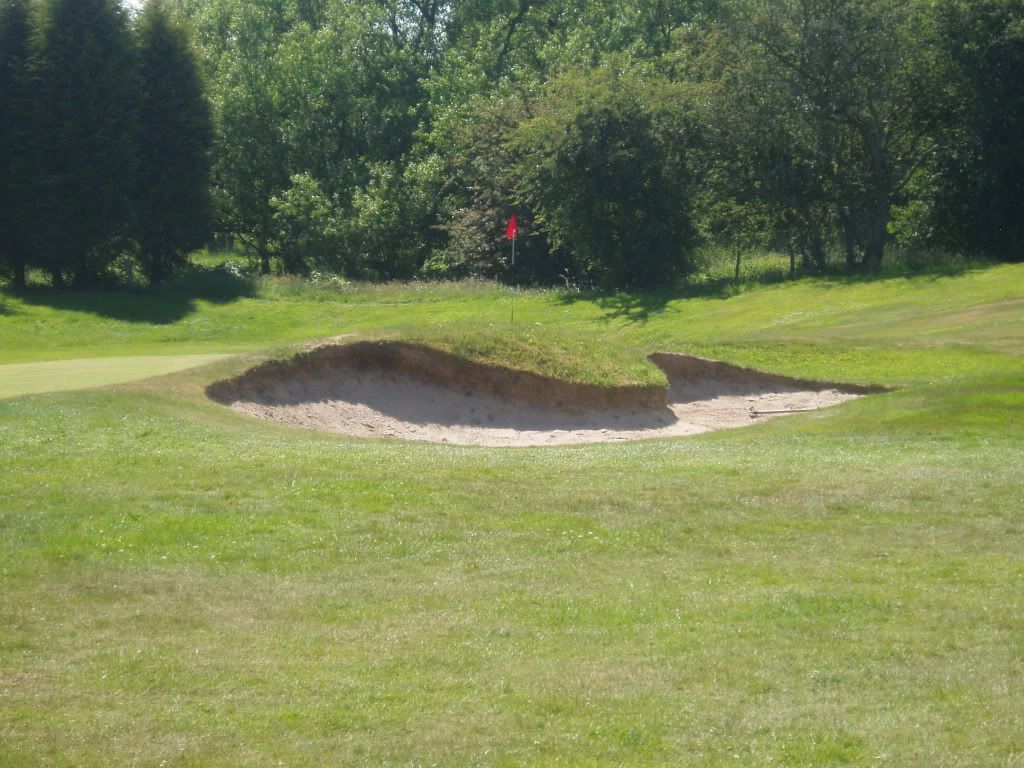

4. 485 yards par 5/ 13. 377 yards par 4 York
A little stream crosses just where the fairway doglegs to the left to run along the boundary fence. Separate teeing grounds for the 4th and 13th ensure that this hazard comes into play in a different way each time round.
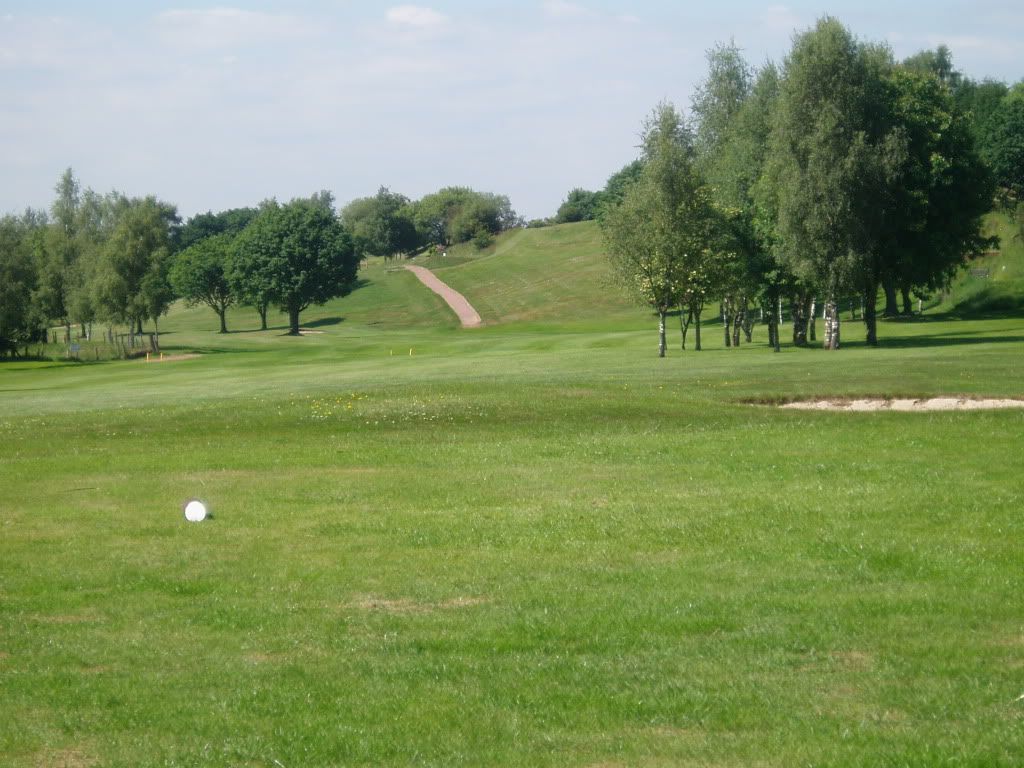
The 4th continues on level ground until shortly before the attractively raised green, when fronting slopes complicate the approach.
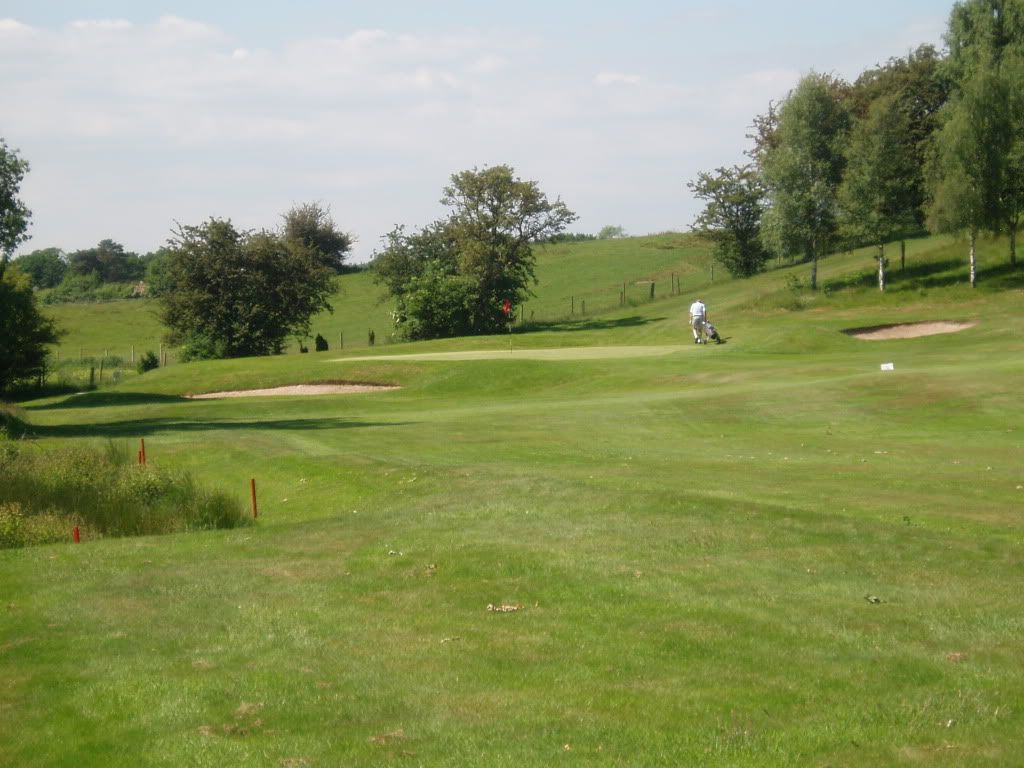
The shorter 13th, however, features a green close to the fence on the left of the fairway. It is protected in front by stunted trees and a stream. The trees do not render the green inaccessible, but very much dictate the strategy from the tee.
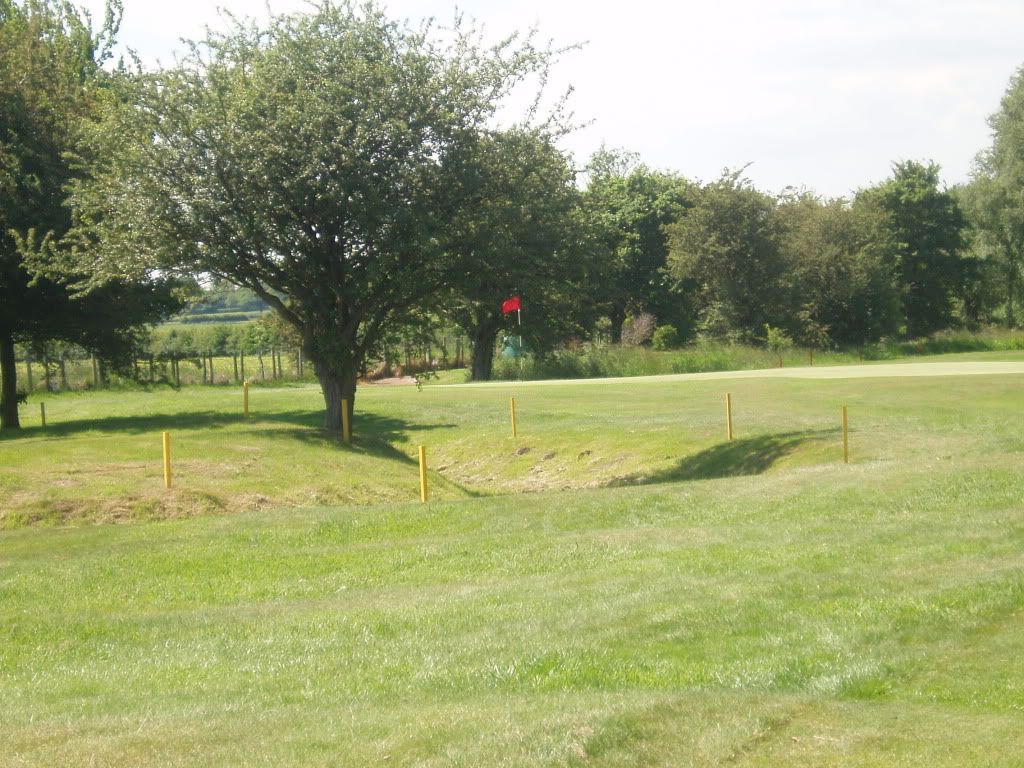
5. 158 yards par 3/ 14. 177 yards par 3 Lancaster
A short walk forwards from the 13th green or backwards from the 5th finds the adjacent teeing grounds for the 5th and 14th. Both versions of the hole demand a similar shot, only of differing lengths to find a ledge green on top of a steep hill, the putting surface broad but shallow.
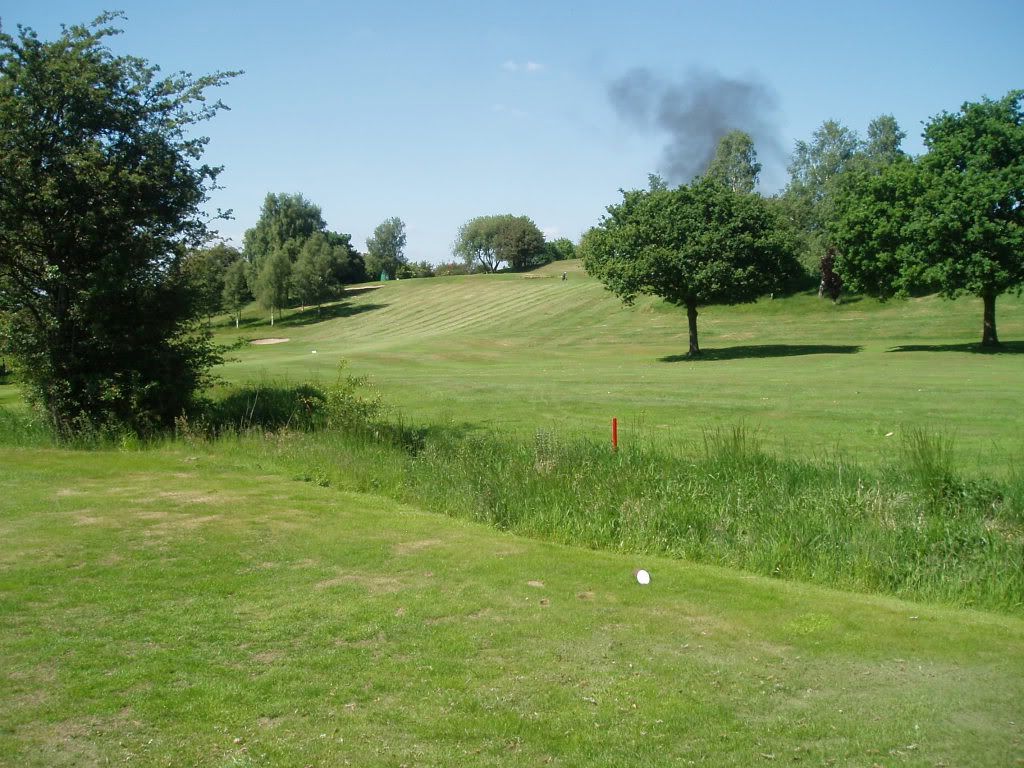
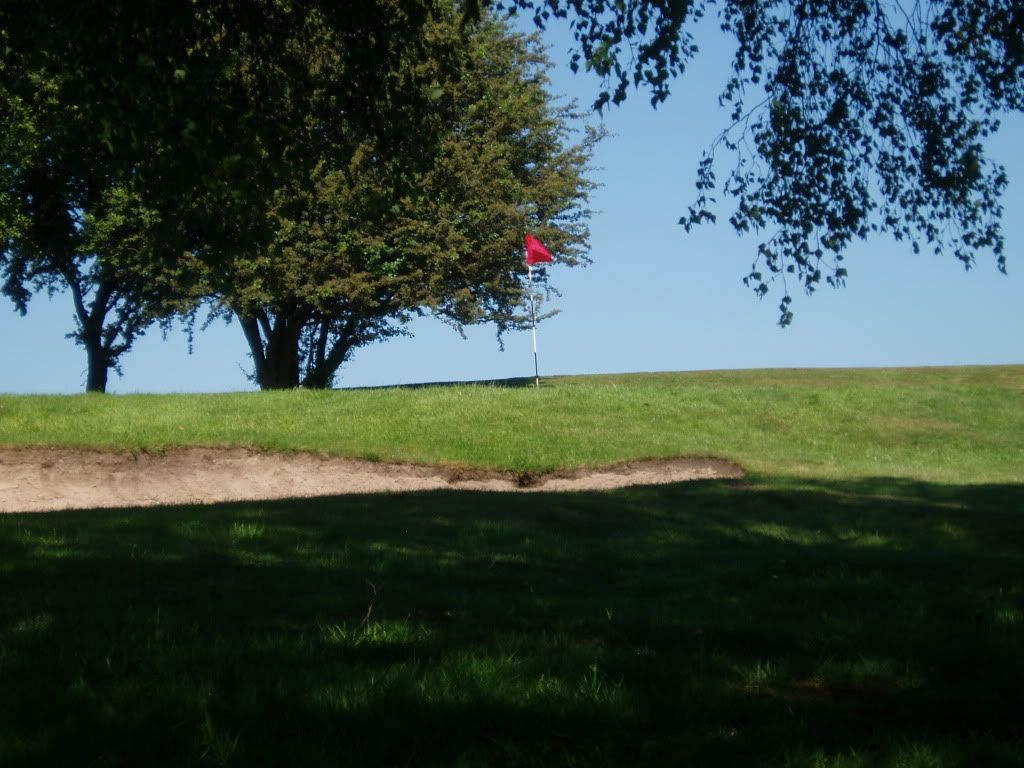
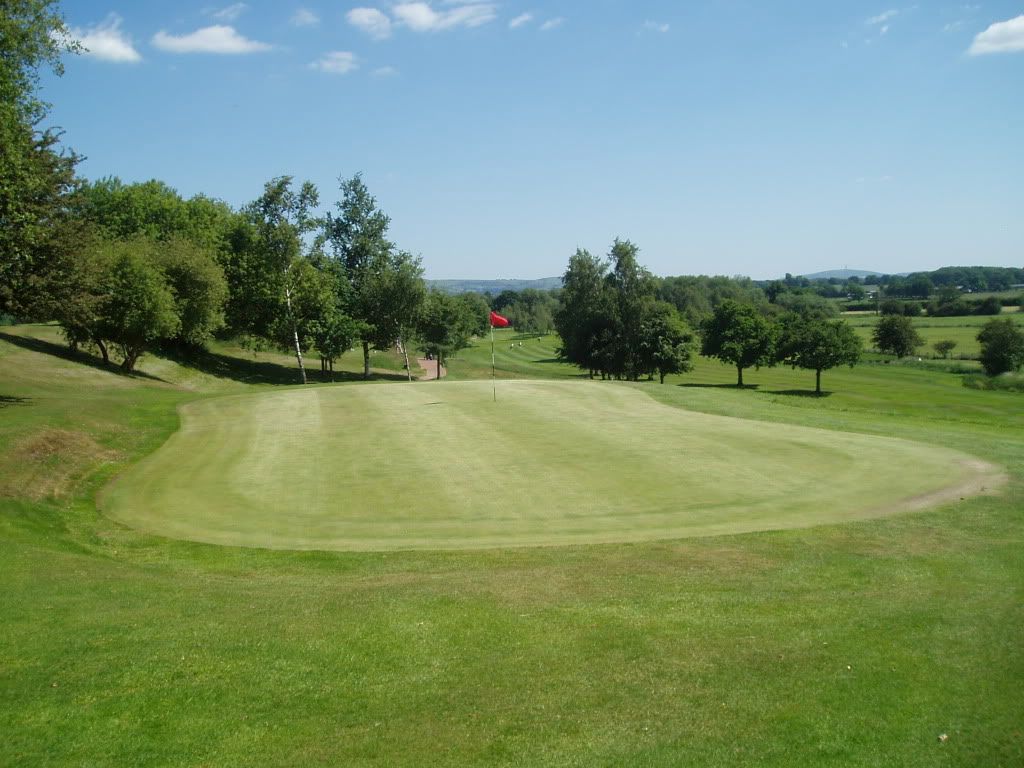
6. 379 yards par 4/ 15. 369 yards par 4 Lincoln
Once again the separate tees produce different tee shots, although the objective is much the same, to find a fairway shared with the 4th and 13th somewhere in the vicinity of the aforementioned stream. It may not be ideal for holes to share a fairway but at least players are approaching each other straight on and visibility is not a problem.
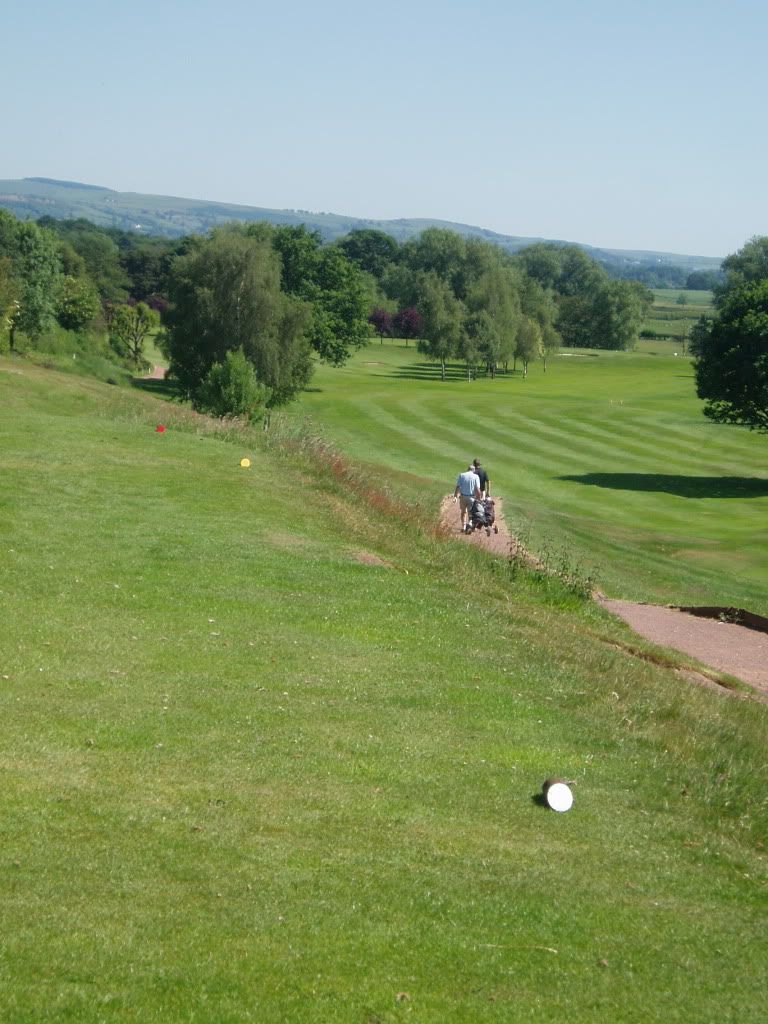
The 6th and 15th effectively cross the 4th/13th fairway on the diagonal in pursuit of a level green backed by trees.
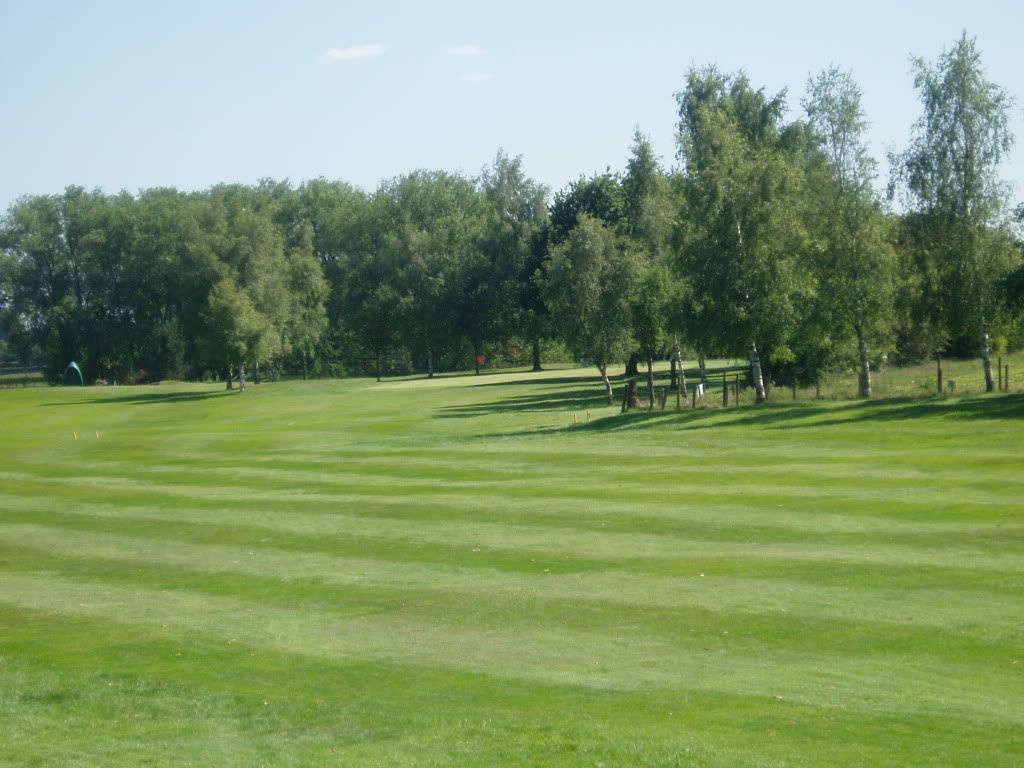
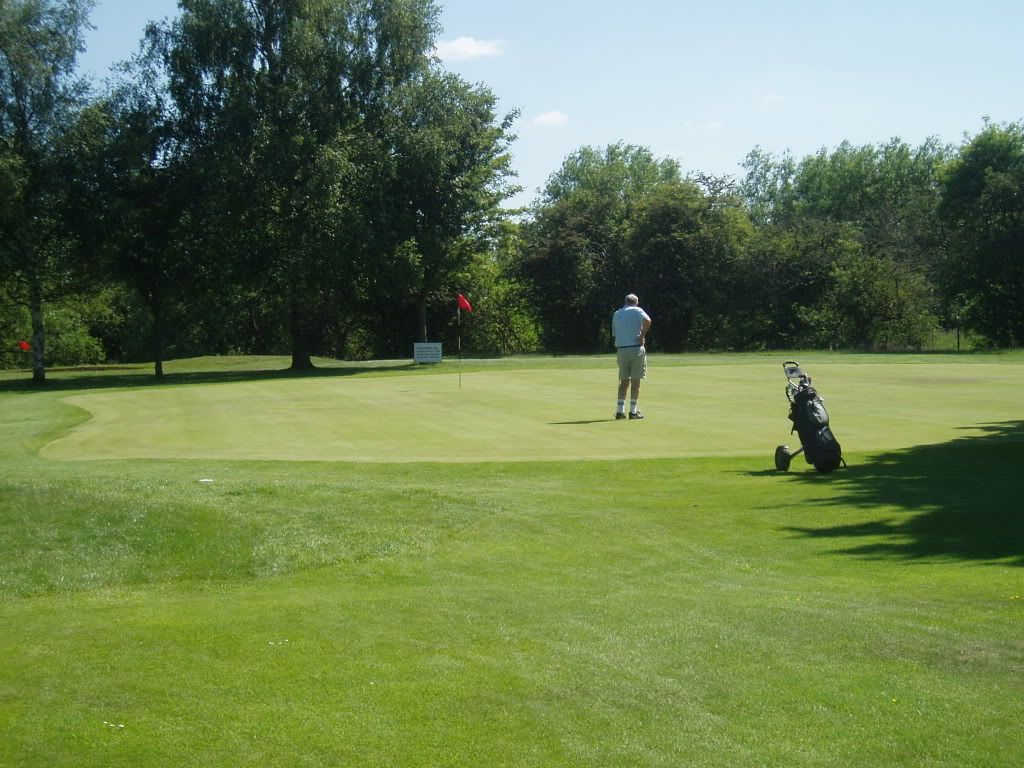
7. 165 yards par 3/ 16. 204 yards par 3 Shackleton
Although the green is the same, these are two very different holes. The 7th plays at an angle across a stream and part of a field to the green.
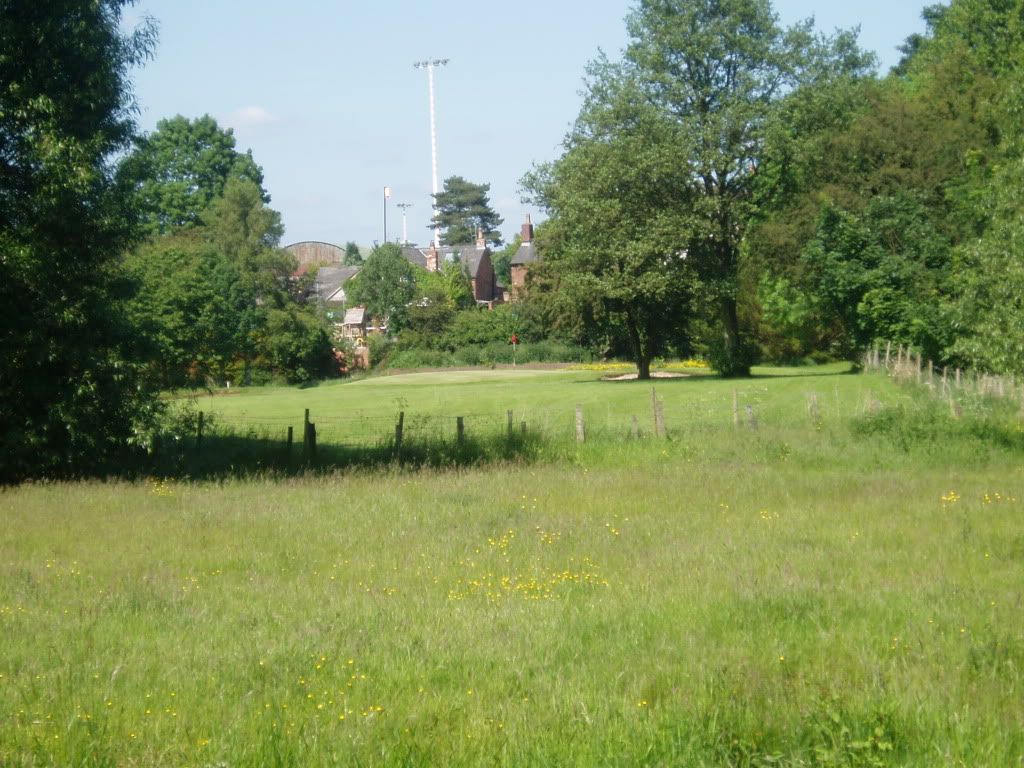
The 16th is much longer, but straight on.
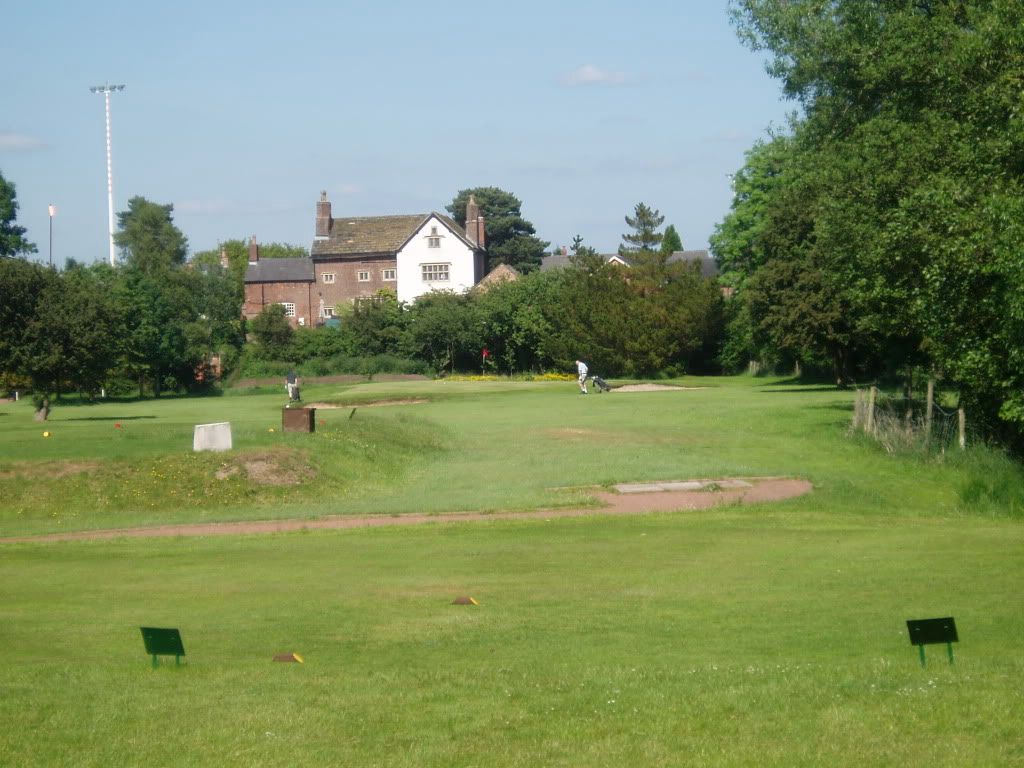
Here the putting surface is raised and domed sufficiently to repel careless shots.
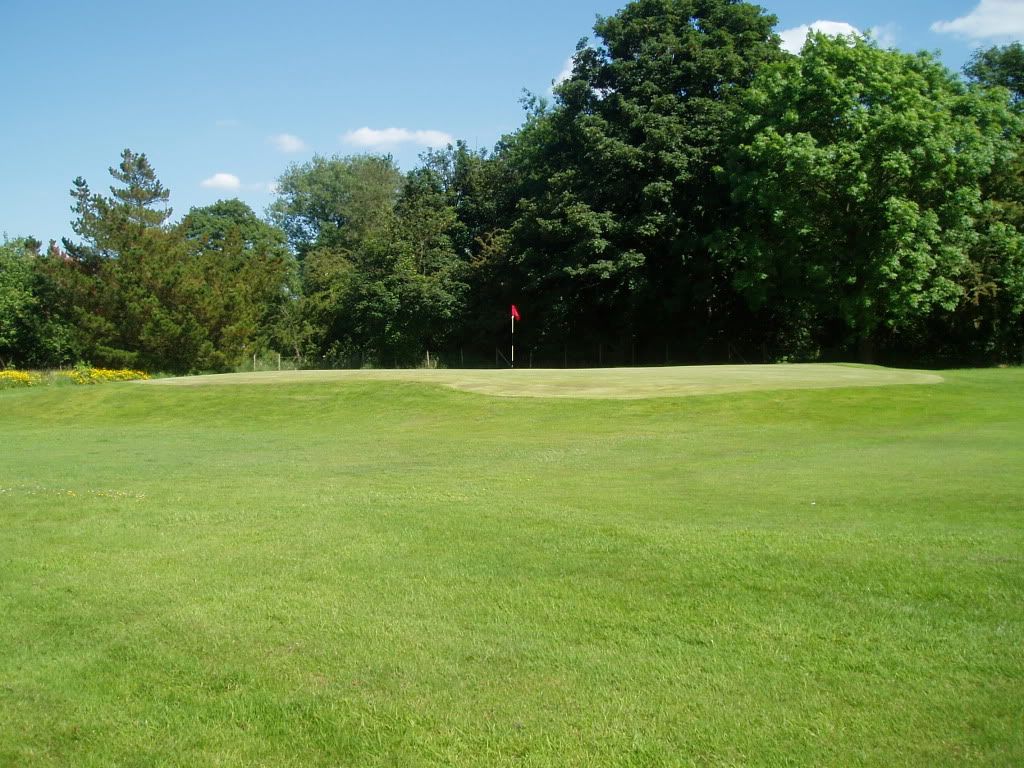
8. 378 yards par 4/ 17. 348 yards par 4 Ashton
A number of different hole sequences have been tried over the years, but there is no escaping a second trudge back up the same path we climbed to find the 3rd and 12th tees. This time, however, we continue on past the clubhouse to the 8th and 17th tees. The tee shots are similar to the 1st, climbing very gently, with the fairway overlooking the whole of the airfield.
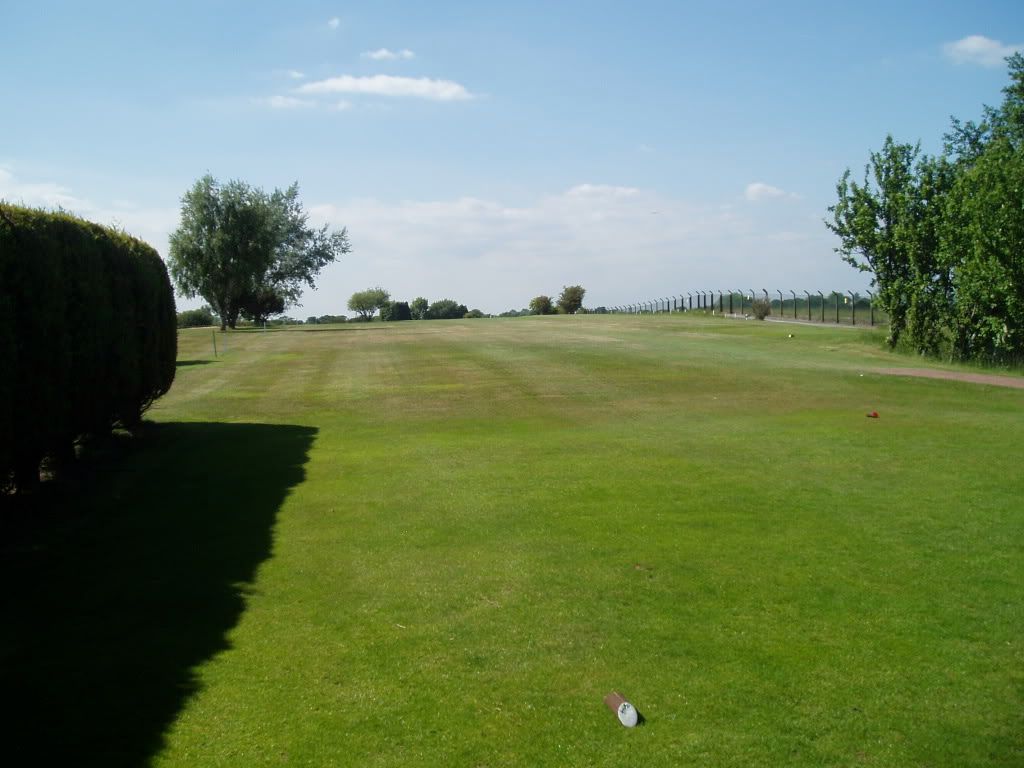
This green is backed by a stand of trees, offering a degree of shelter from the wind on this exposed ground.
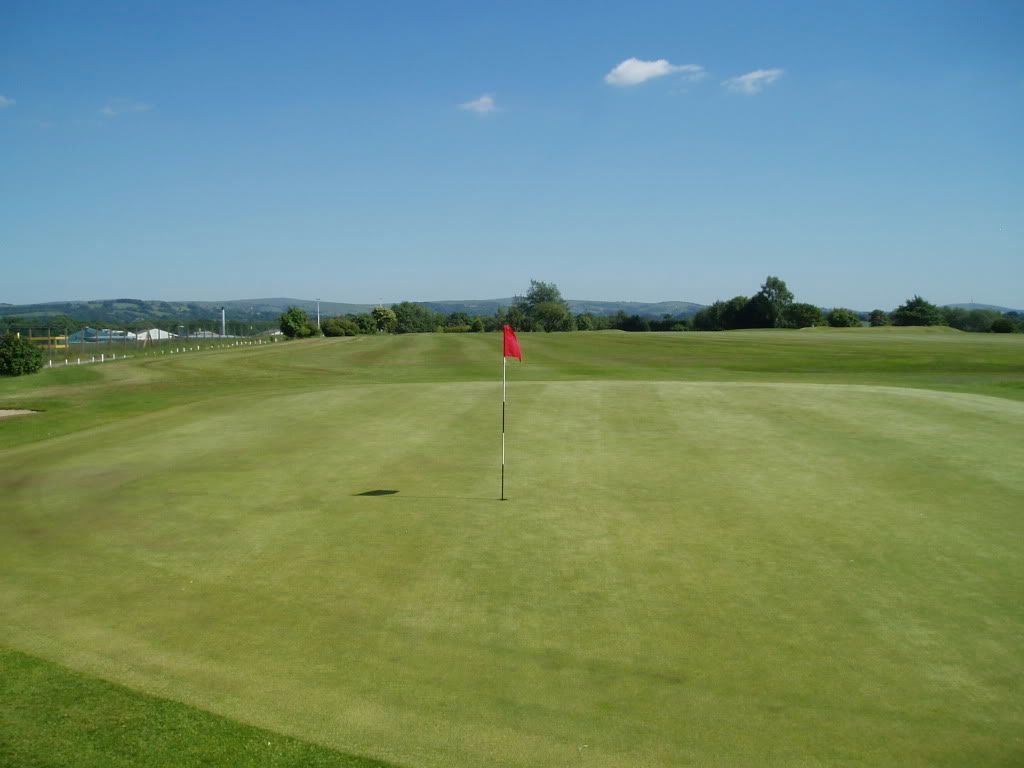
9. 513 yards par 5/ 18. 503 yards par 5 Tudor
Once again the different tees affect the line on the drive, the 9th being farther to the right, calling for discretion if anyone is on the 1st green.
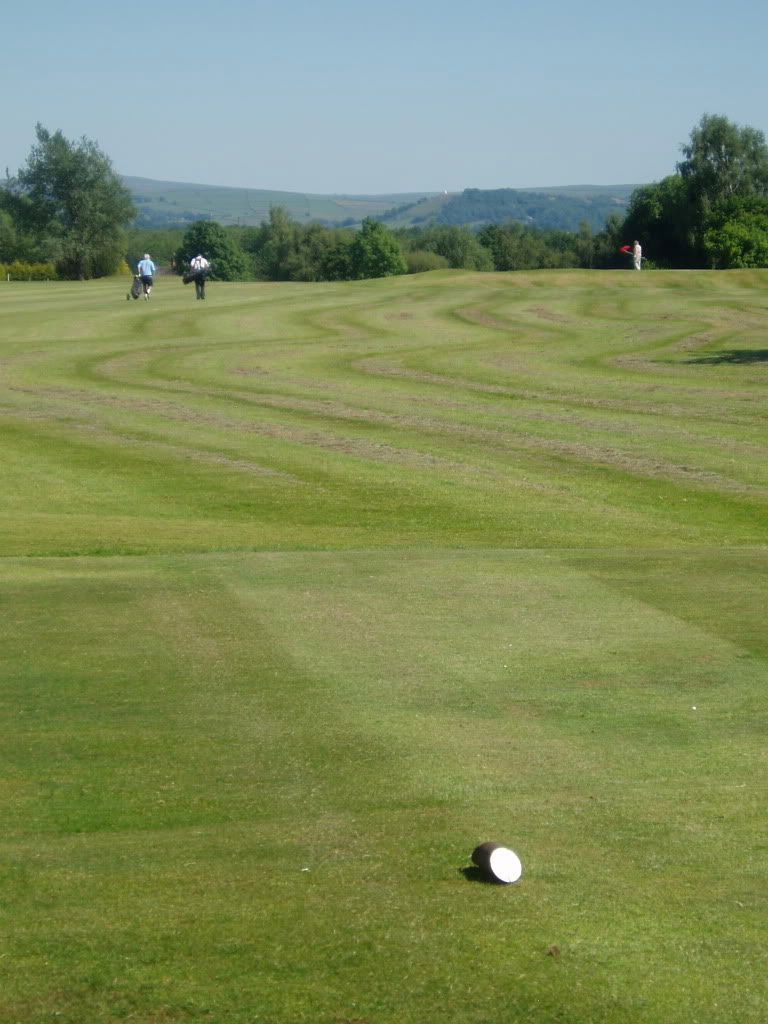
Internal out-of-bounds posts compel straightness: do not stray onto the 1st or 8th fairways, or else! For the second part of the hole the fairway sweeps down and left past the clubhouse, protectively clad in netting, to a green set at a slight left-to-right angle making it somewhat difficult to access from afar by those intent on eagle or birdie.
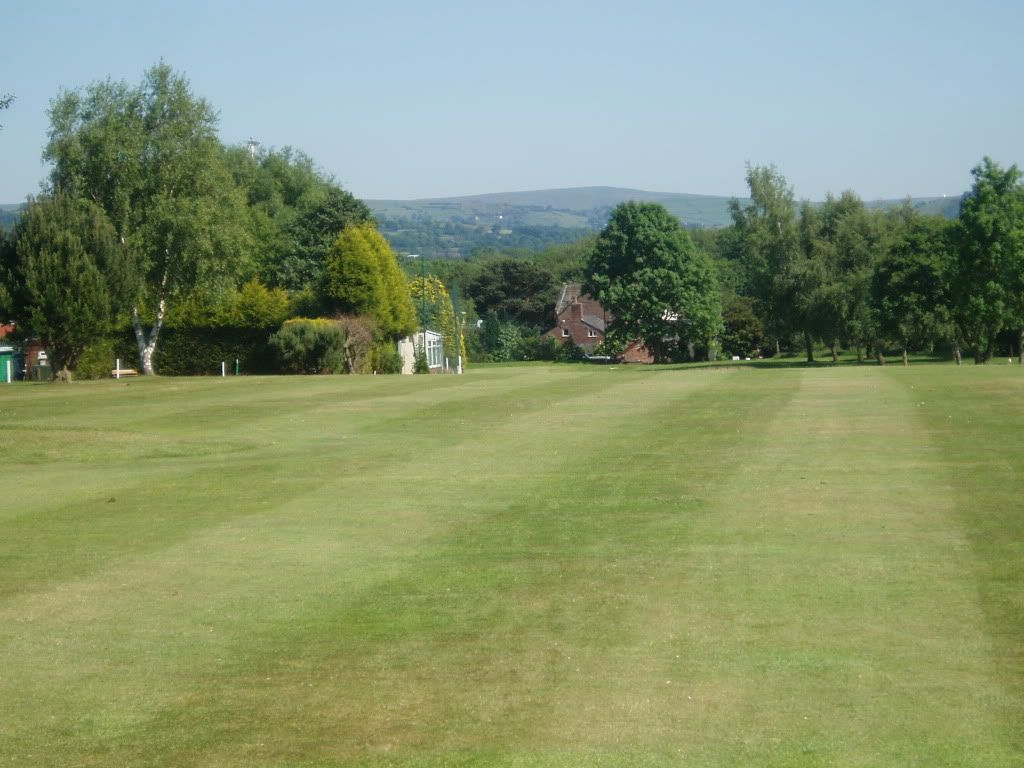
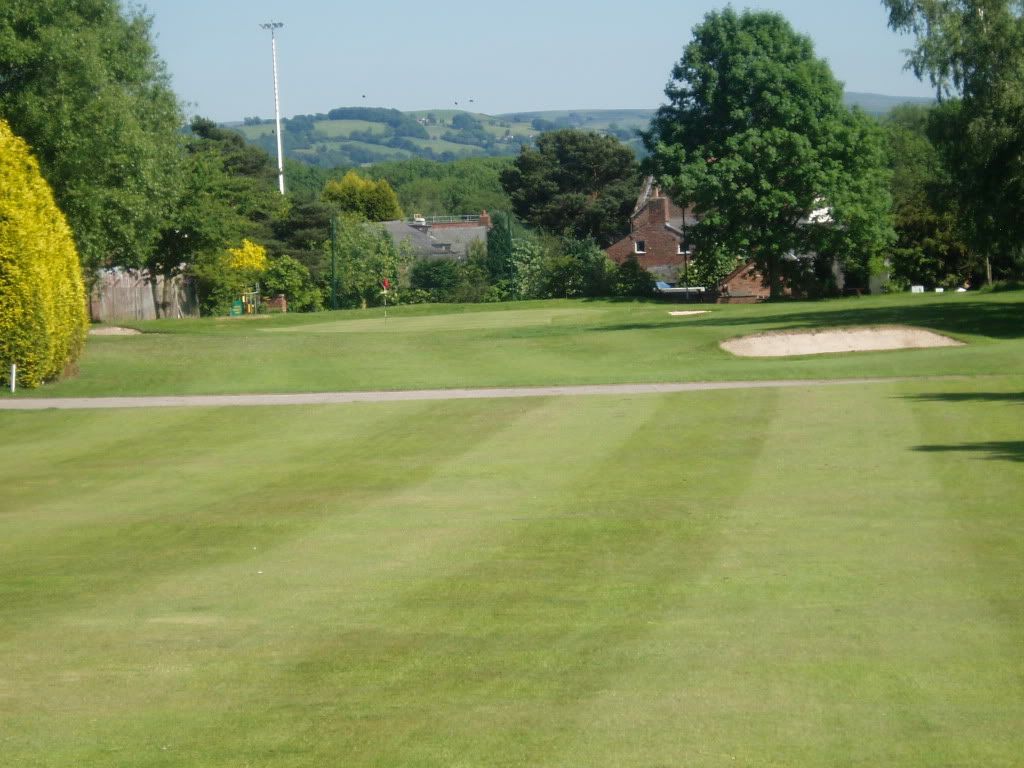
Cheshire has a good number of 9- or 10-hole courses. Most of them are full of character. Avro is no exception.